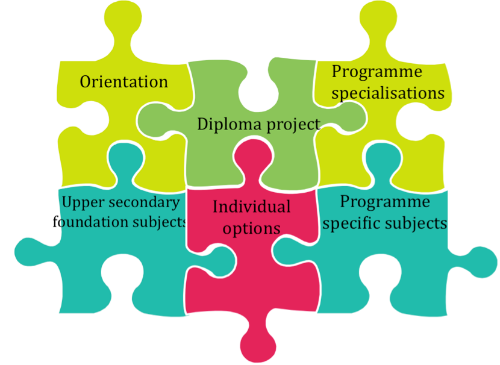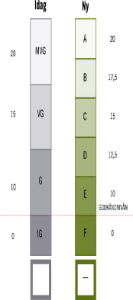Education In Sweden
From the age of one, children can be admitted to pre-school (förskola). Pre-schools help provide an environment that stimulates children’s development and learning and enable parents to combine parenthood with work or studies.[4] During the year before children start compulsory school, all children are offered a place in a pre-school class (förskoleklass), which combines the pedagogical methods of the pre-school with those of compulsory school. Immersion methods amongst children aged four to seven is highly emphasized in compulsory school.[5][6] Between ages 6/7 and 15/16, children attend compulsory comprehensive school (grundskola), divided in three stages. The
- A goal steered system with a high degree of local responsibility.
- The Swedish Parliament and the Government draw up the overall national goals regarding
-the Education Act
-the curricula
-the school ordinance, the upper secondary school ordinance, and the adult education ordinance
-the syllabuses for compulsory school
-the syllabuses for subjects that are common for all programmes at the upper secondary school
-the diploma goals for the upper secondary school.
National Agencies
- The Swedish National Agency for Education (NAE)
- The Swedish Schools Inspectorate
Regular supervision of all schools, may make use of sanctions.
Quality audits – special matter or problem area.
Applications and licences for independent education providers
The Child and School Student Representative (BEO).
- The National Agency for Special Needs Education
Support to special schools, run special needs schools.

Tasks of the NAE
- Steering documents
We set the frames and guidelines on how the education is to be carried out. - National school development
We support the development of preschools and schools with the aim of achieving greater goal attainment. - Evaluation
We evaluate activities through in-depth studies and analyses. - Follow-up
We follow-up school activities, how they are carried out, and how results
can be improved.
•Teacher certification
We make decisions on the certification of preschool teachers and teachers
The NAE’s steering instruments
- The National Agency for Education draws up and decides on:
-syllabuses for the compulsory school, the compulsory school for learning disabilities, the Sami school and the special school
-subject syllabuses for the upper secondary school
-knowledge requirements for all school forms
-Regulations
-general guidelines.
- Education providers have primary responsibility for distributing resources and organising activities so that pupils attain the national goals.
- Based on this, each preschool, school and leisure-time centre chooses the working approaches most appropriate for them. The work is followed up by means of systematic quality assessment.
Education providers
The main responsibility lies with the municipalities and the organizers of independent schools and schools.
- no county-level governance
- 290 municipalities
- approx. 600 independent providers
- ”voucher system” financed on tax funds – no fees
- obliged to follow the Education Act – Equal terms for all education providers and schools
- considerable differences in capacity
- national and local requirements.

Preschool
- A school form for children aged 1-5 years.
- Voluntary, general preschool from the age of 3,
or from the age of 1 if this is needed because of parents’ work or studies or the child’s own needs. - Should ”stimulate the child’s development and learning, and also provide a secure care environment.”
Preschool class
- Voluntary school form, free of charge for children
aged six. - Covers a minimum of 525 hours per school year.
- Should ”stimulate pupils’ development and learning and prepare them for further education.”
- Combines the working approaches and methods of the preschool and school.
Compulsory school education
- Compulsory school attendance starts when the child reaches the age of seven.
- Compulsory school attendance is the norm in compulsory school.
- Compulsory schools are run by municipal or private education providers.
Alternatives to the compulsory school
- The compulsory school for pupils with learning disabilities,
sometimes together with the training school, has its own curriculum and syllabuses, for years 1 – 9 with the option of an additional year. - The special school (state), 5 regional schools – hearing,
3 national schools, years 1 – 10. - The Sami school (state), years 1-6.
7 international schools, 3 national boarding schools,
special youth homes and Swedish schools abroad
sure-time centres
- Supplements the school for pupils aged between 6-13 years.
- Should ”stimulate pupils’ development and also provide them with meaningful recreational activities.”
- ”… to the extent needed with regard to parents’ work or studies, or the pupil’s own need.”
The upper secondary school
All pupils who have completed compulsory schooling are offered upper secondary education by their home municipality.
The right to start an upper secondary education applies to students up to the age of 20.
Free of charge and voluntary.
Admission requirements
| Vocational programmes
Pass grades in
|
Higher education preparatory programmes
Pass grades in
•Eight other compulsory school subjects |
Diploma goals

Nationally determined differences
-Special variants
-Education with nationwide admission with its
own diploma goals
-Cutting-edge education
-Professional dance education
-Sports education.
Alternatives to the upper secondary school
- Upper secondary school for learning disabilities
- International schools
- National boarding schools
- IB education
- Distance education at upper secondary level in Torsås
- Special institutions (state)
- (Swedish schools abroad).
Municipal adult education
Basic adult education from the age of 20.
- Upper secondary municipal adult education from the age
of 20 or completion of a national programs or equivalent education. - Special education for adults.
- Swedish tuition for immigrants (SFI).
Students from vocational programs have the right to attain basic eligibility for higher education.
Pupil assessment
- Formative assessment; development dialogue;
written development plan: national tests. - Compulsory school: End of semester reports, year 6-9,
pilot scheme year 4 (2017). - Literacy and numeracy from year 1 (New).
•Upper secondary: Completed course, diploma project,
How Sweden differs from other countries
Equality of education
- The voucher system – government funds following the choice of school.
- The same expectations on all education providers at local level, regardless of their circumstances.
- Responsible authorities do not evaluate their schools on an equal basis.
The teachers
- Teaching is not an attractive choice of career.
- There is no central wage formation.
- Teacher appraisal is underdeveloped.
- Teachers do not have support staff.
Long-term conditions
- The municipalisation reform and school choice system have contributed to increase school segregation.
Municipalities can lose their mandate every fourth year, and might not have any knowledge about schools
| I
n the compulsory school for learning disabilities, grades are only awarded if the pupil, or the pupil’s guardian requests this.
F or a (–) dash are not used in the compulsory school for learning disabilities.
|
 |
Teacher Training Education
- Preschool programme
- Compulsory teacher programme
- Subject teacher programme
- Vocational teacher programme
- UKÄ, the Swedish Higher Education Authority
- Huge lack of teachers
- Alternative ways, boosts.
Top priority challenges
- Newly arrived pupils
Including all newly arrived pupils into ordinary education as soon
as possible. - Educational equity
All schools must be developed into good schools. - The teachers
Ensure supply of competent teachers. Provide prerequisites for improved quality of teaching.
•Long-term conditions
Consistency and support for continued implementation of reforms and local development

 SmartOWL
SmartOWL